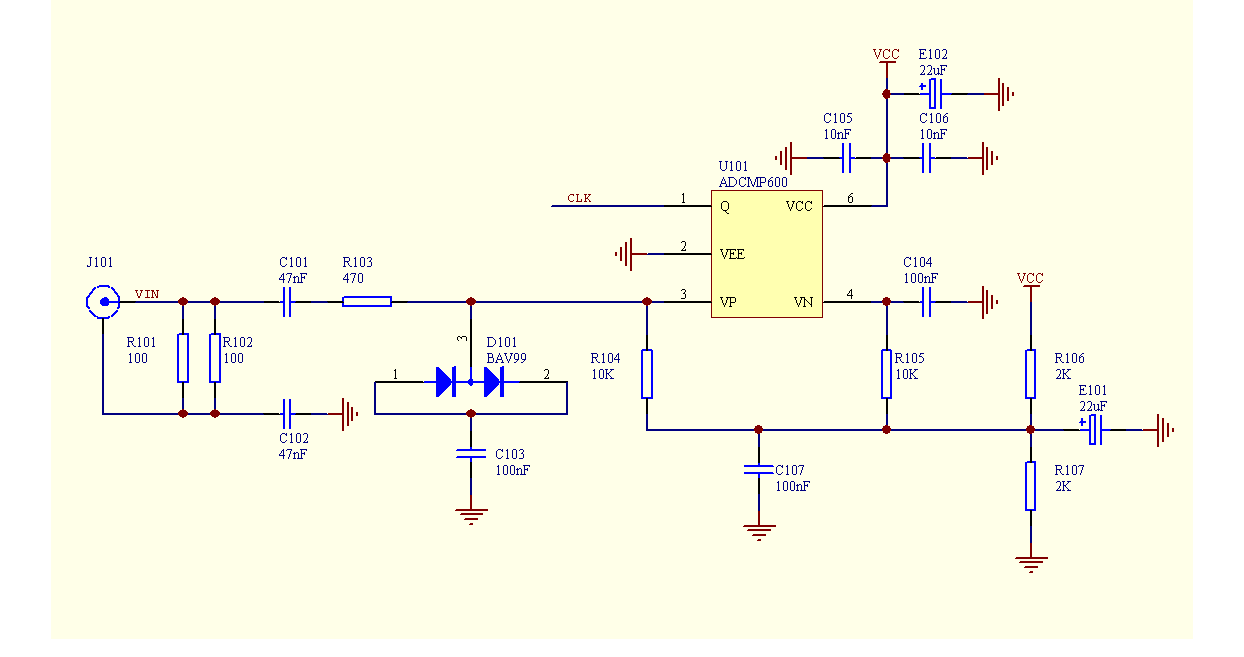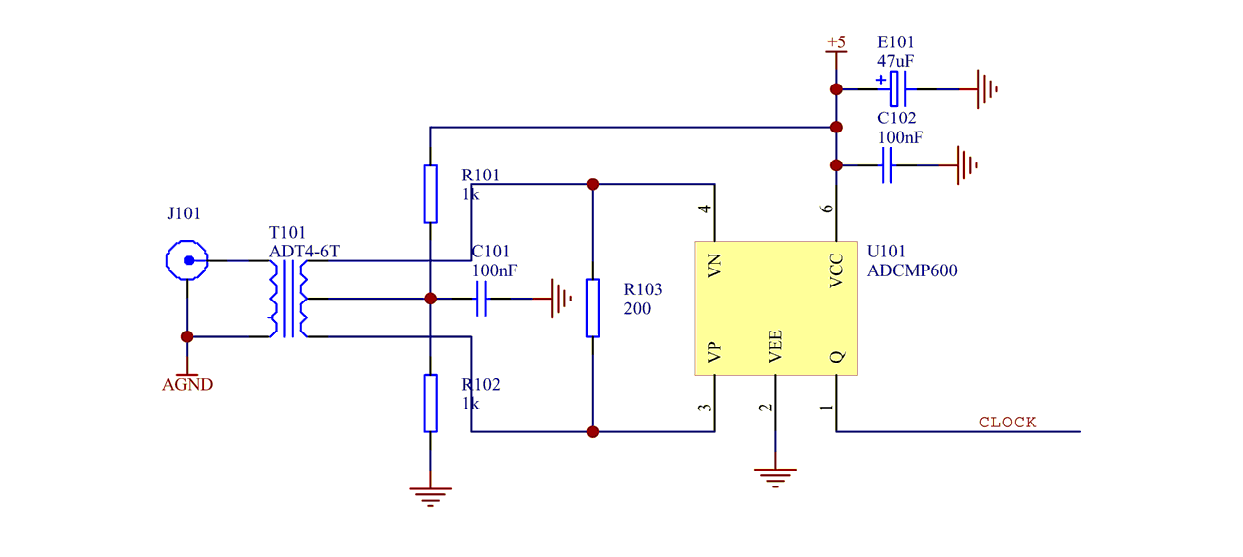(More Info) |
Bruce's: Wide Bandwidth Clock Shapers
Capacitor Coupled Clock Shaper
The circuit shown below has a wide bandwidth [<10kHz, > 100MHz]. Input amplitude range is [100mV - 5V]pp.
Originally designed for use in a linear phase detector there are other applications for which it is suitable.
The design is derived from the input clock shaping circuit in the HP K34-5991A. A comparator with a CMOS/TTL compatible output is substituted for the ECL differential amplifiers in the K34-5991A. For higher frequencies either an ECL or LVDS comparator can be used.
(click on schematics for full size pictures)
Transformer Coupled Clock Shaper
The circuit shown below works over the 0.1MHz to 100MHz frequency range and is intended to produce a TTL/CMOS compatible output when the input amplitude is known and well controlled. As shown the circuit is intended for operation with a +7dB input signal. For lower frequencies other comparators like the AD8561 can be used. For higher frequencies an ECL or LVDS comparator can be used with a suitable transformer.
Duty Cycle stabilised Clock shaper
In the circuit below, Schmitt trigger IC U101:A is driven by the sinewave voltage across the low Q tuned tank. The tank is tuned to minimise the dc output from RF detector D101. U102 stabilises the duty cycle of the output of U101:A. This compensates for the part to part variation in the switching thresholds of the 74AC14.
Filtering sinewave clock sources to minimise harmonic and subharmonic content.
Although a high Q narrow bandpass filter is the obvious approach, using such a filter will severely degrade the phase shift tempco. Its better from the perspective of phase shift stability to use a low pass filter with low phase shift at the signal frequency supplemented by high Q bandstop filters tuned to the frequencies of the harmonics or subharmonics to be eliminated. Such filters can have low phase shift and associated tempco at the signal frequency.


